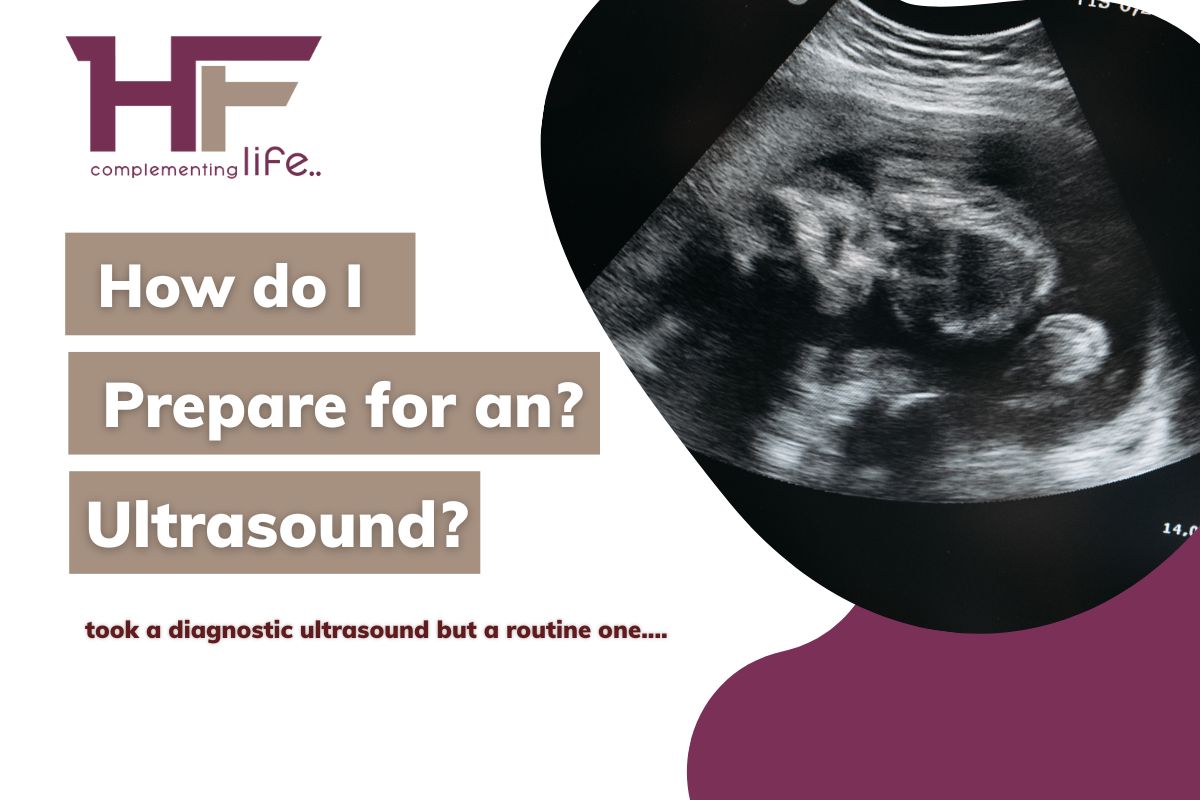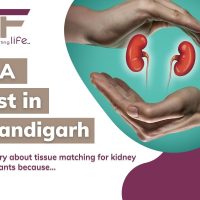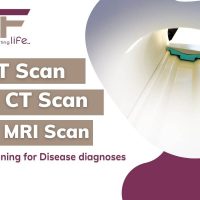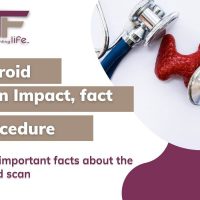CContents
You must be wondering: How do I Prepare for an Ultrasound?
Hi everyone out there,
If you are wondering how one may prepare for an ultrasound, I can share with you how I did! Do you want to hear my story?
Read below.
Basically,
I was not the one who took a diagnostic ultrasound but a routine one, thinking that it would be the best opportunity to get your physical health examined at the age of mid-20s after consulting with a doctor.
Of course, I did surf the net before approaching the test. And one fine day, I found HealthFinder. My Ultrasound Test became within the budget of my pocket. In three steps – I got the quotes; I scheduled my booking with one of the private diagnostic centers at Chandigarh having state-of-the-art equipment, & paid when I came home after taking the test!
Didn’t it seem like a smooth process?
Yes, it is!
That too, just at Rs. 1200 (perhaps, because of the 50% discount)!
But, before uptaking the test, I followed all that my doctor said. In fact, I researched more on the net about its risks and side effects but found none as specific. They say it is painless, reliable, and the safest modality of imaging test practiced worldwide. They say it does not expose you to ionizing radiation like an X-ray or CT scan. Nor does it create complications out of magnetic resonance, like an MRI.
Yes. Ultrasound is the process that utilizes sound waves to create imaging of your internal organs. It is 17th-century research on bats that culminated into industrial practice and then clinical practices throughout history, standing tall today as the most versatile healthcare technique to give you a detailed insight into your organs & tissues in the body.
Development of medical technologies through the shoes of an ultrasound practice would appear to us like a modification of the older techniques to suffice a better screening. But that is not real. Each of the methods is different in terms of its significance. That is what makes any deficit, defect, or disease traceable to human knowledge when pursuing an ultrasound.
Your doctor will let you know which one you have to!
It can be a traditional ultrasound of your pelvic or abdominal organs or maybe your musculoskeletal structures as a whole!
It can be a duplex, two-dimensional ultrasound, or a three-dimensional imaging test called triplex ultrasound!
It can be a color doppler ultrasound of your carotid arteries as this method works better to detect the direction of blood flow within your carotid arteries!
It can also be endoscopic ultrasound testing, where your doctor wants to use ultrasound as a therapy. I believe you understand that it is somewhat like a combined process of endoscopy & ultrasound!
I took a traditional one! Namely, a transvaginal ultrasound! It was a Minimally-Invasive process. Doesn’t lead to any wear & tear, but you may feel a little discomfort. On that note, I absolutely did not feel any!
Must say, I was initially afraid about the invasion, even though minor, and requested my doctor to recommend an alternative that is non-invasive. I knew there was one named transabdominal ultrasound which is all done from outside the body. I told her so! Since it was a routine test and not something diagnostic, like me having some symptoms or something, but just a healthcare resolution I was fulfilling after my abortion in the last month, my doctor supported my choice and went for a transabdominal one.
But, after I researched more, like my usual habit these days, I thought to give the initial one more preference over the latter. I had spent 15 hours researching an ultrasound and came to this conclusion.
Are you wondering why?
Well, when I read more that day, I remember it was 6:00 pm in the clock, I started to search on google – transabdominal vs transvaginal ultrasound, and I came across a blog that says they differ much in the preparation.
After I went through the entire blog, the preparation for a transvaginal ultrasound felt more suitable for me than a transabdominal ultrasound! Yeah, to be more precise, keeping the bladder full and holding control over your urine until the test is complete seemed to me more difficult. I am a person who cannot hold pee for long and especially in moments of anxiousness. It starts to trouble me. I even have pelvic pain because of it. So, it was wiser of me to avoid such a condition by selecting the former, the transvaginal one!
If you are the one who is looking for transabdominal ultrasound preparation, the process may vary. So it is always wiser to research specifically about the definite ultrasound you tend to undertake. I can help you only with the transvaginal one herein!
Step 1 – Research the Procedure & See if the one suits. For me, it did!
After seeing the difference in preparation for the transabdominal ultrasound & transvaginal ultrasound, I wanted to primarily check the transvaginal ultrasound procedure and validate my decision!
I saw that the medical professionals would be inserting a transducer or a wand-like instrument into my pelvic area through the vaginal opening. The transducer creates sound waves and allows them to circulate through our body. Subsequently, the sound waves on encountering or hitting an organ or tissue or any blockage in the structure reflect the transducer, sending electric signals to a computer screen. That is how the image would pop up in front of medical professionals.
In addition to this, I read that I may have to stay still for a time, particularly when the transducer is going inside my body. A stir-up position with knees bent would be the best pose to hold! And apparently, I would feel no pain because of a lubricant. Yes, a lubricant, or gel-like substance, is applied to the transducer for this. In fact, it further gets covered with a plastic sheet. So, no chance of pain.
It more or less suited me! I was more convinced of the fact that I do not need to stay still and think about what would happen if I get the feeling to pee at that moment in case of the transvaginal ultrasound. Also, the lubrication solution seemed doable to me as long as the solution is verified, and does not have side effects. During my test, I believed the center I chose would not disappoint in this regard!
I heard the process would take only 15 minutes, and that was actually so! After asking me to shift to a few positions and screening those angles, the radiologist asked me to leave. So, the process was quick & safe indeed!
And,
Researching about it before the test was the best step I could take!
Step 2 – Check for the option not to have sedatives during the test to refrain from side effects. I did!
Well, if you are not aware of it, then let me tell you that some people become a threat to complications like nerve problems, and some also bear side effects aftermath of an ultrasound. They assume it as the demerit of ultrasound testing itself.
However, that is not the case!
The side effects & complications emerge from the sedatives one takes during a transvaginal ultrasound to avoid pain during the invasion.
I was aware of the side effects of sedatives before. I knew that sedatives can lead to –
- Fatigue or unexplained tiredness,
- Dizziness,
- Nausea,
- Sore throat,
- Vomiting,
- Skin rashes & redness,
- Chills at night,
- Fever, and so forth!
It was when my mother had a minor surgery that I came across these issues at home while looking after her. Just the same as I noted above. The doctor, on contact, revealed to us that – they are no complications. But they are some side effects of the sedatives and shall go away on their own!
Perhaps, these symptoms did disappear after 1 day, and she was back to normal.
Such a piece of knowledge helped me check for the option of avoiding sedatives when I pursued the transvaginal ultrasound. I was up for the little discomfort in inserting the transducer but wanted to refrain from all possibilities of side effects.
To be very honest, my tight work schedule did not allow me to take the risk, as I could not even afford to waste a day staying in bed! So, I discussed it with my doctor and chose an option where no sedatives would be given.
That’s a crucial step, I consider, as a part of the preparation for ultrasound testing!
Step 3 – Documentation of Older Medical Reports & A visit to the family history and probable genetic defect.
The next step, for me, was vital, being from a family that holds a history of diabetes for a long. My mother even had fibroids and had to undertake surgery a few years back. Many among my family had hormonal problems & so did I!
I had appendicitis & pursued a minor surgery to remove the appendix in 2018. At that time, I was asked to perform some blood tests. The reports of which are still with me.
Like I said before, I also underwent an abortion last month! It was a medical abortion and was done in consultation with my gynecologist. The prescription she gave, recommending the medications, lay intact with me, even today.
What I did was assimilate them all into one file. From my appendix report to that of abortion, blood test report to that of the list of medications I take because of hormonal problems, or more precisely, for my underactive thyroid.
Apart from the blood test I did during the appendix removal operation, I did two more tests. One is the sugar test and another is cholesterol! I packed them too!
Then I went ahead to stockpile my blood pressure measurement. Well, it may seem odd to you, but I prefer checking my blood pressure level every month and having a record of it collected all the while. Thereby, I bring those out and put those in the file I made to carry alongside for the ultrasound! If you consider this a healthy precaution, you may anytime start following it and making a record yourself.
I still remember that after this documentation was complete, I had a sigh of relief. I was sure that I am not missing any medical documents and that if required to submit them in the reception may not delay my appointment.
Do you want a delay? I suppose not!
Step 4 – Following a definite Dietary Chart. You may even get help from your doctor in this regard!
Modification of the dietary habits stands a must for all ultrasound preparation though they may vary from each other to a large degree. Yet, some regulations in the dietary chart stand common for all ultrasound preparation. Or rather, all surgical, therapeutic, & diagnostic preparation!
I read about it from the net, gathering experts’ tips from multiple sources! But, taking the doctor’s assistance was a better option for me, and that is exactly what I did! I rang up my doctor asking for a diet chart for one week before the diagnosis. Of course, I did not want any problems to arise on the day of the test!
My doctor asked me to primarily avoid spicy food for the week!
Since she was aware that I am too much into snacks, she suggested me some home-made snack ideas to adopt into the diet but repeatedly warned me to strictly reject processed & spicy junk foods from outside shops so that I don’t face stomach upset or indigestion on the day of the test.
Then she made the chart for the day before the test. I remember it was a 24-hour schedule, starting from 10 am, on the day before the test, to the next day, the test day, at 10 am!
She said that my diet must be light for the day and may include –
- Some cooked potatoes without butter or margarine,
- Bread toast with jelly,
- A canned vegetable broth that has to be fat-free,
- Canned fruits or fruit juices,
- Green Tea, preferably, if not, normal tea or coffee but with no cream at all, &
- Plenty of water, at least 8 to 10 glasses.
The amount, she said, can differ, and there is no restriction on it. However, no substitution from the list can aid. This chart has to be followed until midnight and at no cost can contain –
- Fresh fruits or vegetables,
- Diary products like curd, cheese, butter, ghee, milk, etc.,
- Fish, chicken, or other red meat,
- Carbonated drinks, and
- Chewing gums.
Thy is the list of No(s) for the day before the ultrasound exam! Once the clock tick 12 at night and the day of the exam steps in, the diet chart mentioned absolutely no food at all.
This made me think that I could grab a few chocolates as a midnight munchie, but soon I was able to control my temptation and realize that the chart said not to have anything after midnight. Not even water, as the test demands me to have an empty bladder.
Perhaps, I could drink only after the test was over!
Step 5 – Dealing with the concern of Pubic Hairs & Comfort. Better to give it a thought!
This step may not be equally important to all women, depending upon their level of the type of comfort. However, for me, it was necessary.
I am typically a person who fights with my own stereotypes on a daily basis, but like everyone, some stereotypes & prejudices yet remain. I was okay with the fact that an unknown person would have an eye on my vagina, but because it was a medical pursuit, my self-conflicts taught me that there was nothing uncomfortable in it.
Yet again,
Who would like to disclose the vagina with lots & lots of pubic hairs? You, of course, can, but I would not ever!
So, I wished to shave my pubic hair before the day of the test and go clean. This particular step helped me to reduce the discomfort while having the test. Both in terms of appearance & efficiency in the process of inserting the transducer!
Step 6 – I used to take daily medications and still do. So, thought of discussing it with my doctor on it!
If you too take regular medication because of asthma, hypertension, hormonal problems, or maybe diabetes, make sure you consult about it with your doctor beforehand. If not, you can simply skip it!
I take medications for my thyroid, as already discussed before, so this step was mandatory for me.
Well, I was allowed to take medications with a little water in the morning, like my regular schedule, and mostly it is! The medication was like daily hormone replacement tablets. Medical science calls it Levothyroxine.
However, medical experts say that medications entailing aspirin are usually restricted. I, too, heard so! Once an expert tips video on “how do I prepare for an ultrasound therapy” gave a disclaimer on the use of medications like –
- Ibuprofen A, the over-the-counter pain killer used as an anti-inflammatory drug to eliminate migraine or period pain.
- Cama arthritis pain relievers, which also is anti-inflammatory drugs.
- Robaxisal tablets, relieving muscle spasms!
- Aspergum is a non-steroidal anti-inflammatory drug used to lower the risk of heart attack among coronary artery disease or CAD patients!
- Bufferin, i.e., the combination of aspirin & antacid, we use to obsolete fever and the common cold.
- Percodan tablets are the immediate-release opioid agonists that medical science offers us at times of severe body pain & fatigue.
- Trigesic tablets, serving to relieve Kawasaki disease, headache, fever, risk of stroke, etc.!
- Painaid, the drug incorporating aspirin, caffeine, & acetaminophen, the one we administer orally for cough & cold, toothache, headache, muscle ache, and so on!
- Orphengesic, the medicine used in times of acute musculoskeletal disorders. It is an assimilation of aspirin, orphenadrine citrate, and caffeine.
- Gensan, another pain reliever for backaches, toothaches, headaches, muscle cramps, etc.
- Anacin, a drug including paracetamol & caffeine, is used to resolve minor pain!
- Aggrenox, the drug that prevents blood clots & possibility of stroke!
- Alka-Sheltzer, the drug doctors prescribe to treat heartburn, loose motion, or other digestive problems! It can simultaneously treat cough, body ache, & stuffy nose.
- COPE tablets we avail of over-the-counter to wipe out allergies, rashes, & infections. It can cure itchy throats and frequent & persistent sneezing.
There are many more non-steroidal anti-inflammatory drugs that you must not consume before the day of the ultrasound test. I did not take any of these, following the terms!
What would you do?
Step 7 – Read other tips given by medical experts on the attire of the day! That’s a must!
And another crucial step I took and did not repent later was to revisit other tips laid out by medical experts all over the web, on the night before the test. No doubt, it stood out to be beneficial!
I had a meeting to catch up after the ultrasound test and had planned to wear a formal dress. But, after reading the tips, I change my mind.
As I was not sure whether the diagnostic center would give me a gown to wear while performing the ultrasound, I carried my formal shirt-pant along and wore a loose dress for the test right when leaving home.
They say it is better to wear a loose dress for ultrasound in case the healthcare center cannot provide apparel! That is when exposing the vagina for the ultrasound would be easier!
One more significant thing about the attire for the day came to my notice on the expert tips. They asked to leave all accessories or metallic junk jewelry at home. It is because the metallic objects may spoil the accuracy of the test by disrupting the circulation of sound waves. What I did was carried them along and wore after the test was done!
Hey,
It is more or less my story on ultrasound preparation. You can share your story with us if in doubt!











Comments